11 Of The Most Exotic And Weird Fruits In The World
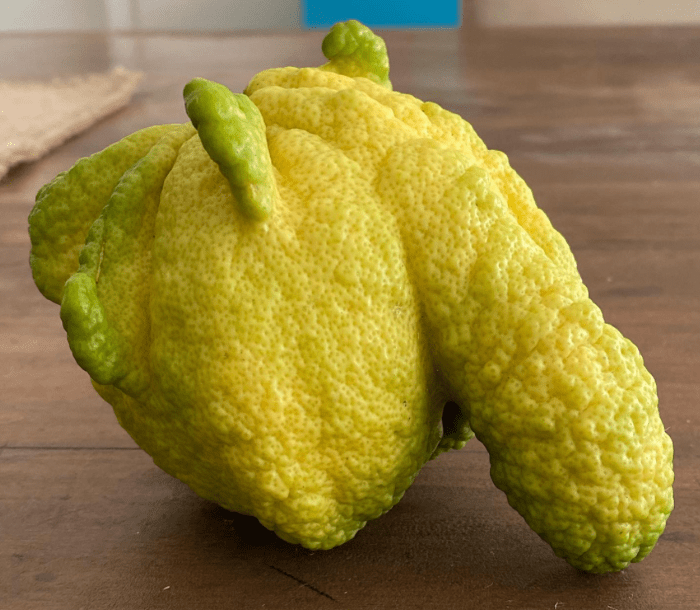
Weird fruits: Fruits and vegetables are essential products for staying healthy thanks to the vitamins and other elements they contain as well as the many benefits for the body, which specialists constantly point out.
Fruits come in a wide variety of shapes and flavors. They can be juicy or drier, big or small, green or orange, sour, sweet or salty. But sometimes, some are more special than others with a strange color, peculiar smell, or unsightly texture.
So, if you are tired of always eating the same fruits bought at the supermarket and you are looking for new flavors and new tastes, come discover with us some of the rarest and craziest-looking fruits on the planet Earth that you must absolutely try.
The most weird fruits
Ackee
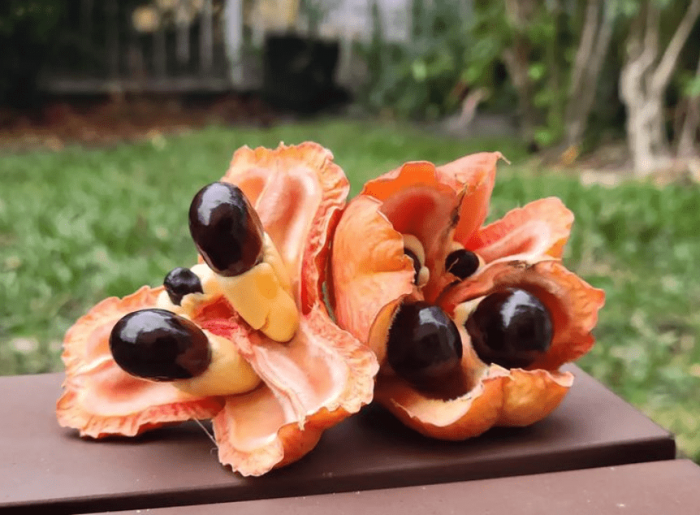
Ackee (Blighia sapida) is the fruit of a perennial tree belonging to the Sapindaceae family. Technically, it’s a fruit, but we can cook it and use it as a vegetable. In fact, it’s the national fruit of Jamaica and plays a starring role in the country’s national dish.
In terms of nutrition, ackee is rather surprising since it would have the advantage of stimulating immune defences and promoting digestion. However, if we improperly eat this fruit it can be poisonous and cause some health troubles.
Buddha’s Hand citron
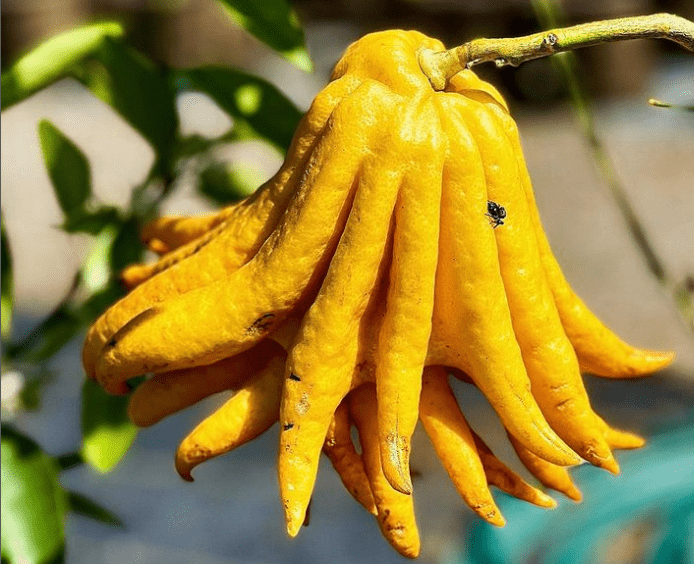
Citrus medica var. sarcodactylis, or the fingered citron is a citrus fruit that belongs to the genus Citrus (Rutaceae) and is commonly distributed in South and Southeast Asia. It is a variety of citron whose huge fruits are very decorative and fragrant.
The fruit is divided into several sections reminiscent of the fingers of a hand, hence its name. This strange fruit is widely used in Chinese and Japanese cuisines, especially to embalm their cupboards. In cooking and baking, we can enjoy it both raw and candied. It is a delicious addition to salads and fish dishes.
Chayote
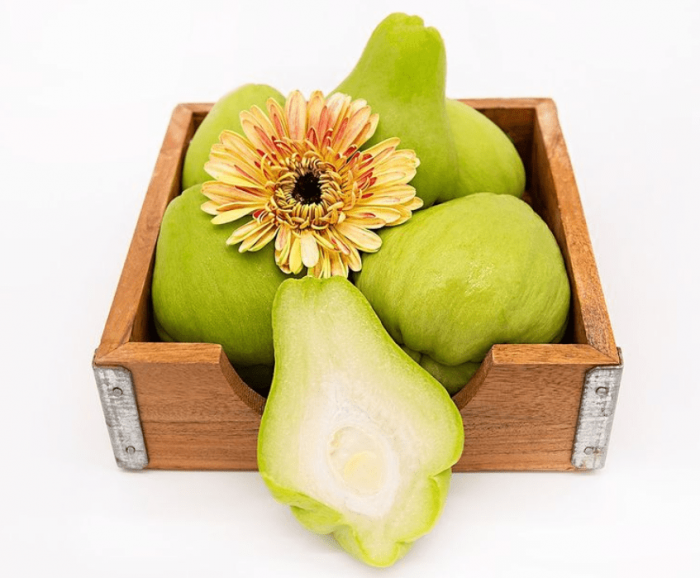
Chayote (Sechium edule), also known as Mirliton and Choko, is an edible plant belonging to the gourd family, Cucurbitaceae. This large green pear, mainly grown in warm regions, has a special taste and is cooked like zucchini. This fruit eaten like a vegetable is stocked with nutrients that benefit both your body and mind. It is high in antioxidants and vitamins, specifically vitamin B, vitamin C, potassium, and amino acids.
Blue sausage
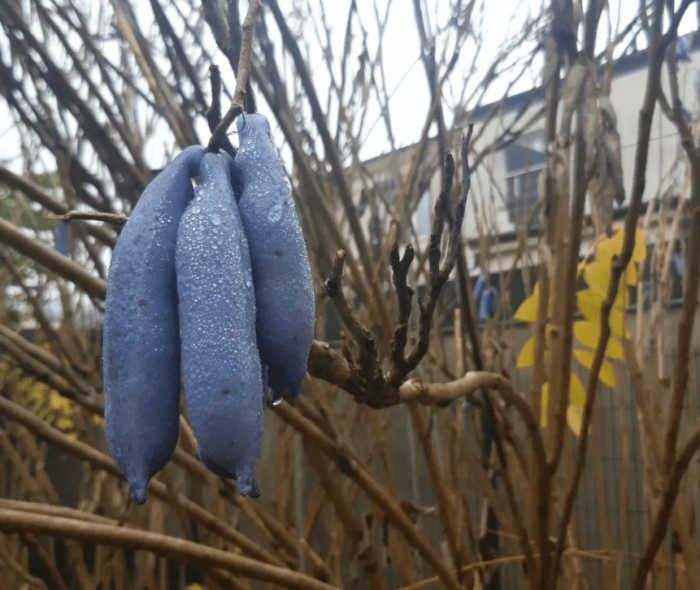
Blue Sausage (Decaisnea fargesii) has been eaten for centuries by the Lepcha, the indigenous people of Sikkim in Northern Eastern India.
This weird looking fruit belongs to the Lardizabalaceae family and contains an incredible blue rind, which is inedible, transparent pulpy flesh and a deliciously sweet and subtle taste, with hints of cucumber and melon. It can therefore be used in sweet or savoury recipes.
Sapote
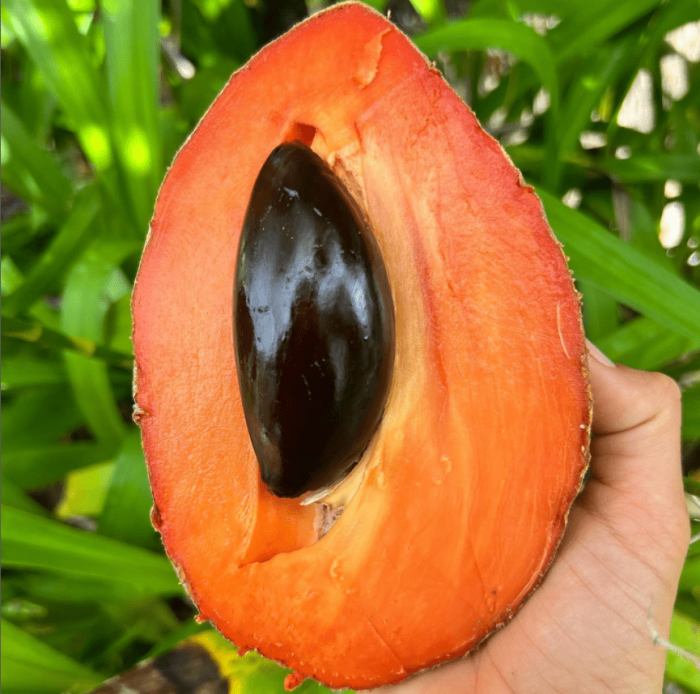
Sapote (Pouteria sapota) also called mamey sapote or red mamey is a very popular fruit in Florida, the Caribbean islands, and Central America. It is a tropical American fruit containing a large, shiny brown seed. The salmon-red pulp is eaten fresh or made into preserves, sherbets, ice creams and drinks.
Because of its interesting taste and texture, the mamey sapote fruit is rapidly gaining in popularity for cooking purposes. Additionally, mamey sapote is high in vitamins A and C, as well as in potassium. It is also an excellent source of dietary fiber.
Akebia
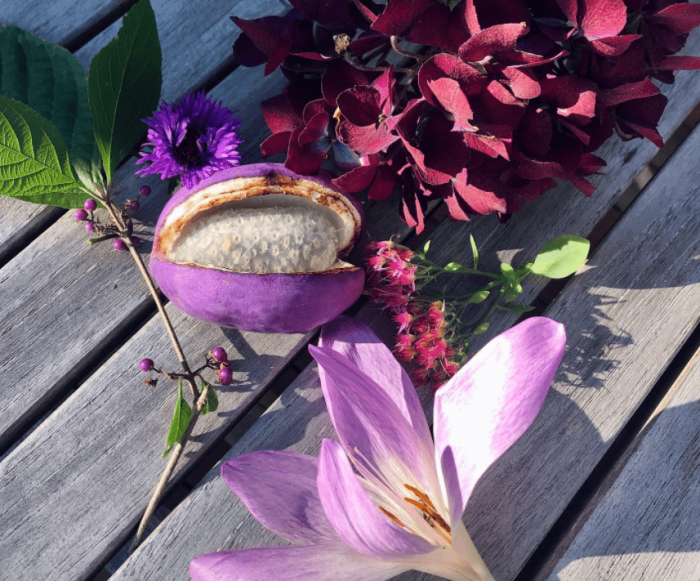
Purple Akebi (Akebia quinata) is a cylindrical to oblong fruit belonging to the Lardizabalaceae family. There are multiple varieties of Akebi fruit varying in size and appearance, but the skin is generally thick, spongy, and semi-firm with a soft give when squeezed. Some varieties are tasteless, others have a slightly more present taste, close to apple, pear, coconut, and melon. Purple Akebi is a good source of vitamin C, zinc, vitamin B6, calcium and potassium.
Salak
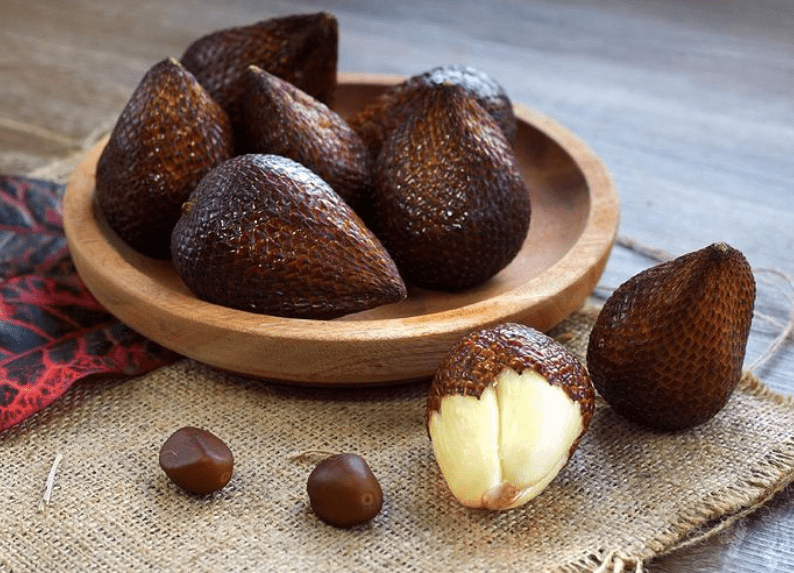
Salak (Salacca zalacca) is a species of palm tree (family Arecaceae) native to Java and Sumatra in Indonesia. Salak named also snake fruit due to the reddish-brown scaly skin is edible and can be peeled by pinching the tip. The outside of this funny fruit is scaly like a snake and prickly like a cactus, but the inside is sweeter than honey, sour like a pineapple and incredibly juicy. Its flesh is slightly acidic, giving your tongue a citrus-like tingle.
Hala fruit
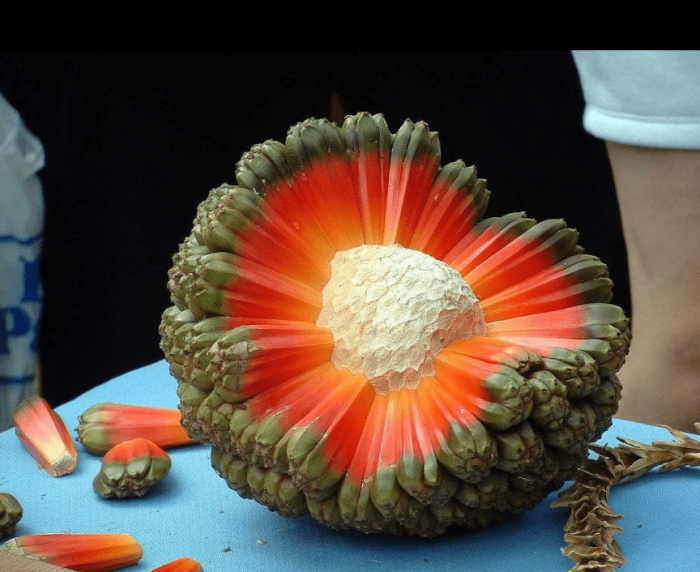
Hala fruit (Pandanus tectorius) is a staple food in parts of the Pacific. Some forms of these weird fruits have been selected for their low content of calcium oxalate crystals, and these can safely be eaten raw. Other forms need to be cooked in order to destroy the calcium oxalate crystals. The fruit has an excellent flavour and is very fragrant. We can also use it to make juice, or cook it as a jam. Moreover, we can dry it and make into flour, a paste or as thin, flat cakes.
Kaffir lime
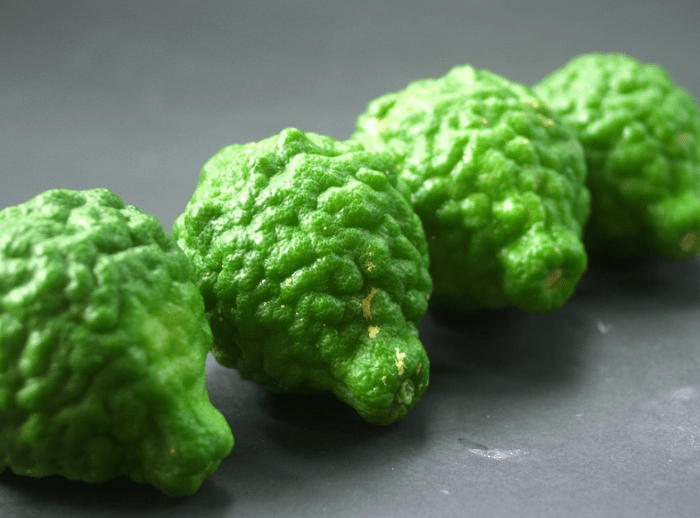
Kaffir lime (Citrus hystrix) called also makrut lime, is a citrus fruit native to tropical Southeast Asia and southern China. This small tropical fruit resembles a lime and we can confuse it in appearance with bergamot. Its taste, on the other hand, has nothing to do with the latter. Moreover, its powerful and intense aroma is reminiscent of lemongrass, ginger and coriander. These weird fruits are rare fruits and they are an excellent source of vitamin C. It is also a good source of flavonoids, mineral salts, and especially calcium.
Black sapote
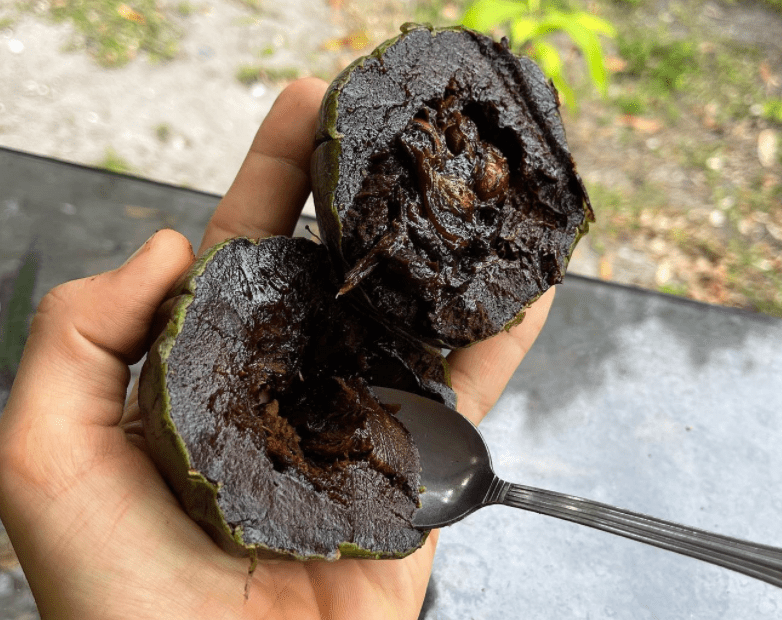
The Black Sapote (Diospyros dihyna) is a species of tropical persimmon native to Mexico, Central America, and Colombia. This rare fruit is oval with brown color and a sweet chocolate-like taste. It is mainly eaten cooked, or raw provided it is ripe and overripe. Moreover, we can directly eat these weird fruits from the plant or mash them and use them in ice cream, milk, juice and desserts. The pulp is low in fat and contains 4x as much vitamin C as an orange.
Carambola
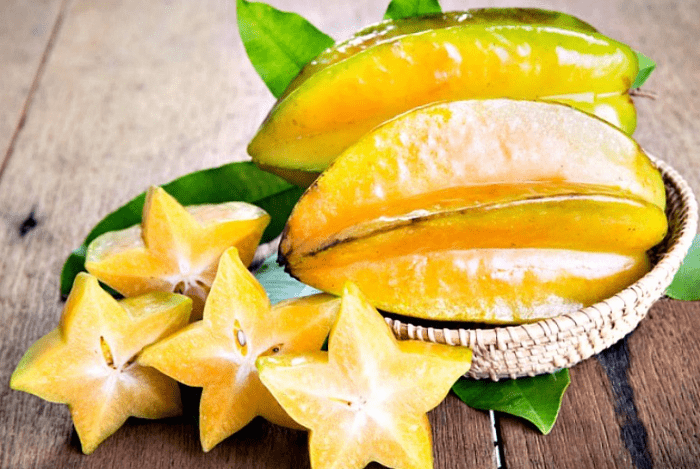
Carambola (Averrhoa carambola), also known as Star fruit, is the fruit of a species of trees in the family Oxalidaceae native to tropical Southeast Asia. It is a sour-tasting berry, containing two seeds in each carpel. As its slices form stars since the fruit has five carpels, we can mainly use it for decorating dishes, but also to make coulis and juices. We can pick the Carambola when it is green. It only takes on its pretty golden color when ripe. The star fruit is also a decent source of several nutrients, especially fiber and vitamin C.
Did You find this helpful? Share it with your friends!